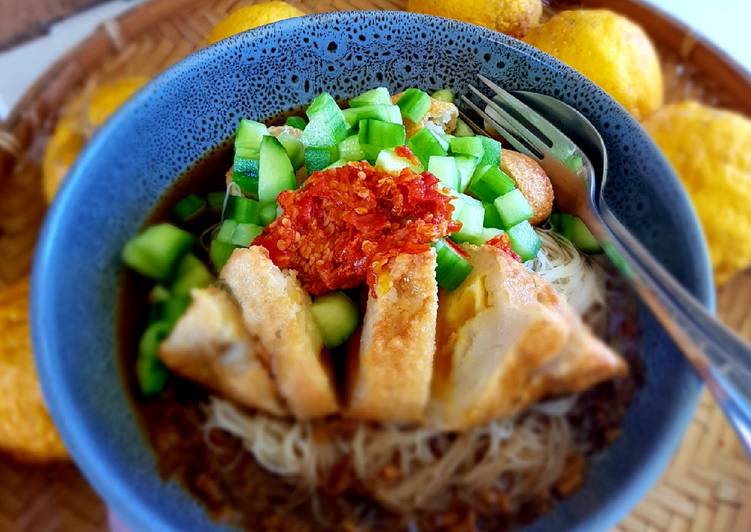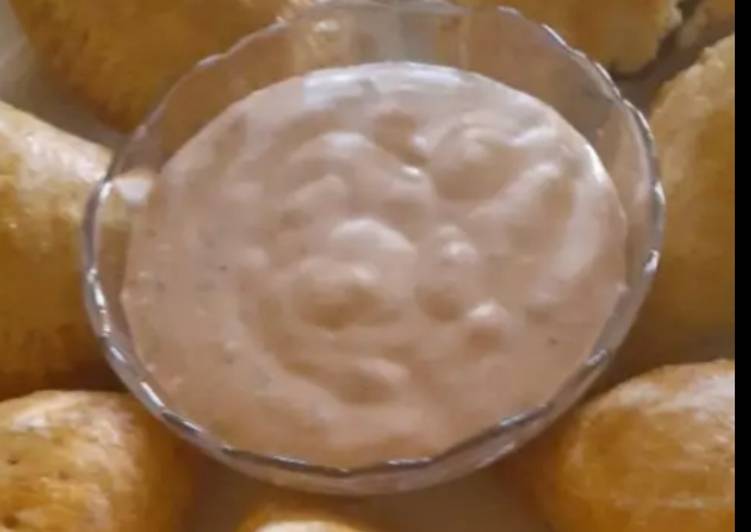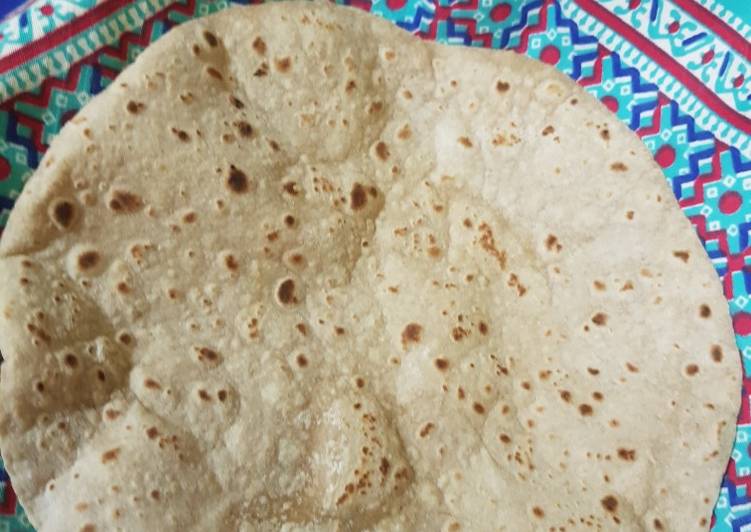
Hello everybody, it is Brad, welcome to our recipe site. Today, I will show you a way to make a distinctive dish, pempek or mpek-mpek. It is one of my favorites food recipes. For mine, I am going to make it a little bit unique. This is gonna smell and look delicious.
Pempek or Mpek-mpek is one of the most well liked of recent trending meals on earth. It’s enjoyed by millions daily. It’s simple, it is quick, it tastes yummy. Pempek or Mpek-mpek is something that I’ve loved my whole life. They are fine and they look fantastic.
Pempek, mpek-mpek or empek-empek is a savoury Indonesian fishcake delicacy, made of fish and tapioca, from Palembang, South Sumatera, Indonesia. Pempek is served with rich sweet and sour sauce called kuah cuka or kuah cuko (lit.vinegar sauce), or just "cuko". Sometimes local people also eat the dish with yellow noodles and diced up cucumber to balance out the vinegar's sourness. Pempek or Mpek-mpek is a delicacy from Palembang, South Sumatra, Indonesia.
To begin with this particular recipe, we have to prepare a few ingredients. You can have pempek or mpek-mpek using 22 ingredients and 6 steps. Here is how you can achieve that.
The ingredients needed to make Pempek or Mpek-mpek:
- Get For the Fish Cake :
- Get 1 kg gram flesh of Spanish mackerels, grounded
- Get 6 eggs yolks
- Prepare 400 ml ice water
- Prepare 4 tablespoon salt
- Make ready 2 tablespoon white sugar
- Take 2 teaspoon white pepper powder
- Get 2 teaspoon garlic powder
- Get 6 tablespoons vegetables oil
- Make ready 1 kg - 1.5kg sago flour/ tapioka flour
- Make ready For the Sauce (Cuko) :
- Get 500 gram palm sugar
- Make ready 4 tablespoons white sugar
- Get 10 cloves garlic
- Take 50 gram bird's eye chilli (optional)
- Prepare 1 teaspoon salt
- Make ready 3 tablespoon tamarind paste (deepen on how sour you like)
- Get 500 ml water
- Make ready Additional Ingredients :
- Prepare Cucumber
- Prepare Egg noodles, cooked
- Prepare Grinded dried shrimp (optional)
It is made of fish and sago flours and served together with a dark, rich sauce called cuko. Cuko is made from brown sugar, chilli pepper, garlic, vinegar, and salt to boiling water. There are many varieties of Pempek. The most famous one is the Pempek Kapal Selam (Indonesian: "submarine"), which is made from a chicken egg.
Instructions to make Pempek or Mpek-mpek:
- Grind all the ingredients to make fish cake, except sagoo/tapioca flour. Mix them well.
- Then take 1 tablespoon of fish batter, add about 2-3 tablespoons of sagoo flour, mix and shape pempek as you wish (usually long and round). Set aside and shape the rest of batter until finished.
- Boil the water using saucepan, and cook the pempek, about 15 minutes. When they are coming up to the surface, mean it cooked. Set aside.
- Deep fry the cooked pempek.
- Make the sauce (cuko): boil the water with all the ingredients until sugar is dissolved. Then grind the sauce using food grinder or hand mixer, filter.
- Serving: place the pempek in plate (you can cut into small pieces), add the noodle and then pour with the soup. Garnish with the cucumber. Some people like to add ebi (grinded dried shrimp).
There are many varieties of Pempek. The most famous one is the Pempek Kapal Selam (Indonesian: "submarine"), which is made from a chicken egg. Pempek (Empek-Empek, Mpek-Mpek) Pempek is a traditional Indonesian fish cake made with ground fish meat and tapioca. The actual origin of this dish is the city of Palembang, situated in the South Sumatra province. The origin story of pempek says that an old Palembang citizen was tired of the traditional fried or grilled fish, so he thought of.
So that’s going to wrap this up for this special food pempek or mpek-mpek recipe. Thank you very much for your time. I am confident you can make this at home. There’s gonna be more interesting food in home recipes coming up. Remember to save this page in your browser, and share it to your family, colleague and friends. Thank you for reading. Go on get cooking!

